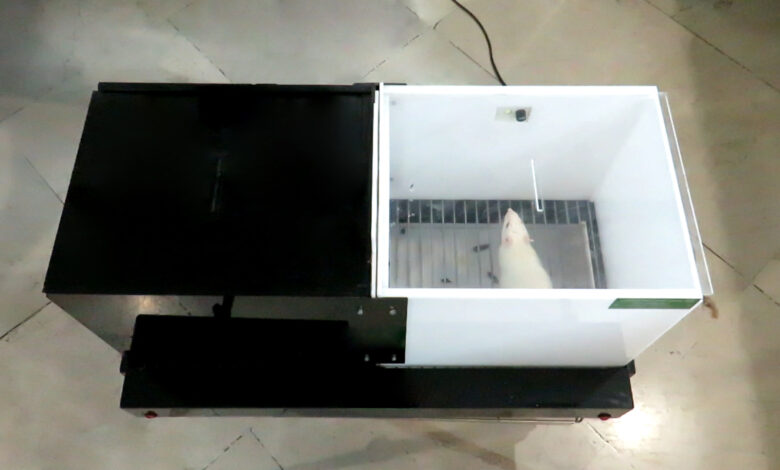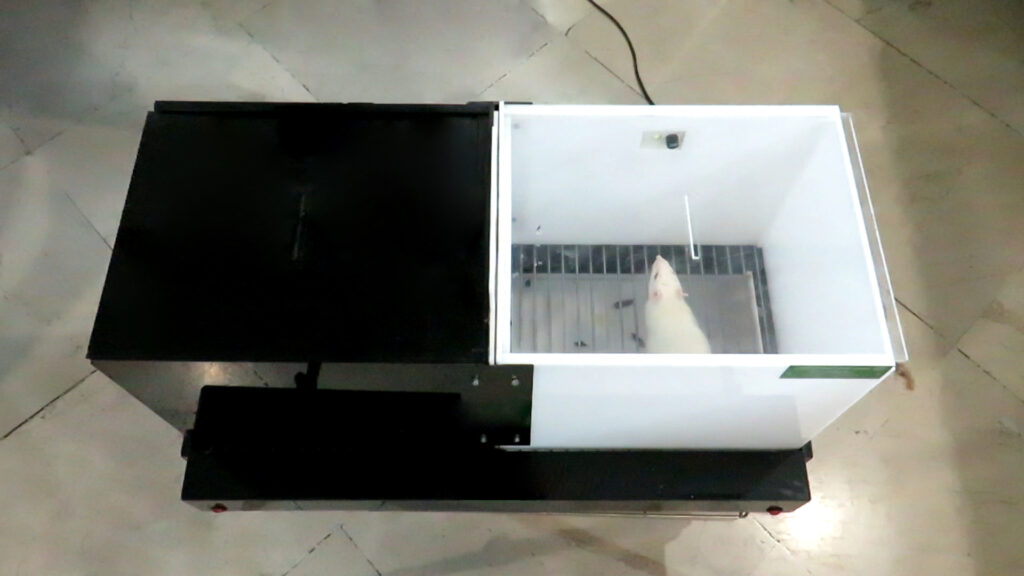Shuttle Box

Shuttle Box
The Passive Avoidance task Shuttle Box is a fear-aggravated test used to evaluate learning and memory in rodent models of CNS disorders.
In this test, subjects learn to avoid an environment in which an aversive stimulus (such as a foot-shock) was previously delivered.

The chamber is divided into a lit compartment and a dark compartment, with a gate between the two. Animals are allowed to explore both compartments on the first day.
On the following day, they are given a mild foot shock in one of the compartments. Animals will learn to associate certain properties of the chamber with the foot shock.

In order to test their learning and memory, the mice are then placed back in the compartment where no shock was delivered. Mice with normal learning and memory will avoid entering the chamber where they had previously been exposed to the shock. This is measured by recording the latency to cross through the gate between the compartments.
The Passive Avoidance task is useful for evaluating the effect of novel chemical entities on learning and memory as well as studying the mechanisms involved in cognition.
Related Services: Animal study and Research laboratory – Sport Physiology – Sport Motor Behavior – Sport Injuries and Corrective Exercise